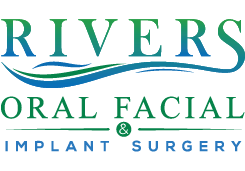Obstructive sleep apnea (OSA) is a serious disruption in breathing that occurs during sleep and is usually caused by an obstruction in the airway. Symptoms normally include excessive sleepiness and snoring. It can also affect oxygenation of blood and may become life-threatening. Treatments include CPAP therapy, surgery, and oral appliances.

Sleep Apnea Surgery
SLEEP DISORDERS
45% of normal adults snore at times. 25% snore most or all of the time, called habitual snoring.
Snoring is due to the turbulence of airflow through an obstructed nasal passage and/or the vibration of collapsed soft tissues within the throat.
As we sleep, we descend into cyclical deeper levels of sleep many times each night in order to be refreshed upon waking. As we descend into the deeper levels of sleep, the muscles throughout the entire body lose some tone, including the muscles that keep the throat open. As the throat muscles lose tone, there is a natural collapse of the airway to some degree in everyone. If the tissues within the throat collapse too much and fall against each other, the air that we breath forces those tissues apart, but then they fall back against one another and vibrate, causing snoring.
There is a spectrum of snoring. On one end is Benign Snoring. In Benign Snoring, the snorer is able to go through the normal full night’s cycle of refreshing sleep. In this situation, snoring is a social issue, which may not feel benign to the snorer’s bed partner as they have to listen to the “racket” and are most likely not sleeping well.
On the other end of the snoring spectrum is when snoring is a sign of a true medical condition called Obstructive Sleep Apnea (OSA). In OSA, at some point within the sleep cycle, the tissues of the throat are falling against one another to such a degree that the air being breathed in by the patient is not able to blow the blocked tissues apart, essentially causing a lack of airflow, or apnea. This temporary “suffocation” causes our brain to make us go to a lighter level of sleep, or completely wake up, to make sure that airflow restarts. This process prevents the patient with OSA from going through the normal cycles of sleep, which can cause multiple problems, including:
- Morning lethargy and daytime fatigue
- Irregularities of the heartbeat (Arrhythmia)
- Problems with the lungs (Pulmonary Hypertension)
- Elevated Blood Pressure (Hypertension)
- Sexual Dysfunction
- Headaches
- Premature Death
SLEEP DISORDER TREATMENT
No one treatment for Benign Snoring or Obstructive Sleep Apnea (OSA) is right for everyone. A thorough physical exam is necessary by an Otolaryngologist to figure out the site(s) causing the obstruction leading to disrupted sleep and snoring.
Generally, the following sites are those more commonly involved in snoring and OSA:
- Nasal passages: Deviated Septum, Enlarged inferior turbinates, Nasal polyps.
- Throat: Enlarged tonsils, Prolonged soft palate and uvula, bulky base of tongue, enlarged tonsils at the base of the tongue (i.e., Lingual Tonsils).
- Obesity is a frequent cause of snoring and Obstructive Sleep Apnea. Often the best treatment to cure one’s snoring and/or OSA is a proper regimen of diet and exercise. As we better understand the causes of snoring and OSA, we are better able to offer treatments that control and often cure. Frequently we are able to perform in-office minimally invasive procedures within the nose and throat, which bring about long term relief without the cost, pain, and down time of surgeries done in the operating room.
